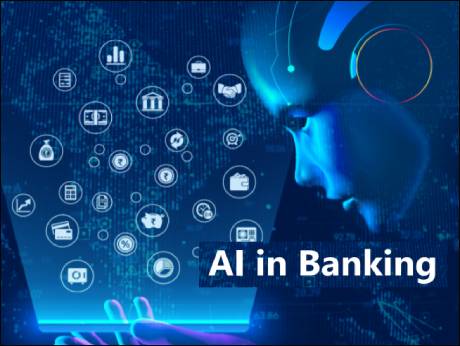
New Delhi, September 16, 2020: The Institute for Development and Research in Banking Technology (IDRBT) has released a whitepaper titled ‘AI in Banking: A Primer’ in association with Microsoft India.
Aimed at supporting banks in their AI journey, IDRBT & Microsoft have worked out a framework and strategy for the successful adoption of AI for accelerated innovation and growth. IDRBT urges the BFSI organisations to increase focus on AI strategy, data management, internal digitization, talent creation and developing safe systems to improve their AI readiness. The white paper also introduces an AI maturity assessment model developed by Microsoft.
As India progresses in its economic journey, financial infrastructure will play a vital role in achieving India’s vision of an inclusive financial system. The Indian banking sector, which is already at the forefront of the fintech revolution, will be an integral part of this journey. The government has stated that for banks to transform and fulfil India’s growing needs, they must harness technologies such as AI and Big Data.
Says Dr. A. S. Ramasastri, Director, IDRBT: “ In the coming years, Artificial Intelligence in Banking is expected to be as normal as using any office productivity tools. AI in combination with Cloud Computing, IoT, Blockchain, 5G and emerging technologies will increase customer experience and agility in product release. We are confident these technology collaborations will draw synergies across stakeholders.”
Adds Anant Maheshwari, President, Microsoft India:“The adoption of Data & AI has accelerated exponentially in the new normal, enabling organizations, individuals and governments to not only rebound stronger from the crisis but to reimagine a new future. The banking and financial services industry, a critical determinant of India’s economic success, has been at the heart of this change. Building a scalable, trusted model to leverage the full potential of data and AI will be central to driving meaningful innovation and digital transformation in the sector. This also has deep implications for financial inclusion and access. It is an honour for us to collaborate with IDRBT in the development of this paper and support its efforts to empower the BFSI industry in India to leapfrog into the future.”
Strategy for AI adoption in banking
While the sector is now increasingly adopting AI, according to AI in Banking, addressing the key challenges facing it today is critical. This includes the need for a trained workforce; lack of uniform data digitisation standards; varying enforcement approaches across countries; differing levels of digital literacy and capacity among users; and concerns around data protection & privacy. Multiplicity of vernacular languages is another factor that inhibits the effectiveness of AI in the Indian banking ecosystem.
The white paper recommends banks embrace IDRBT’s Data, Process, People and Technology framework, developed with techno-bankers and analytical industry experts. It also stresses the urgent need for banks to assess their AI readiness using an AI maturity model and increase focus on:
A two-phase approach: The white paper suggests a two-phase approach viz., pre-adoption and during adoption for the effective development and implementation of AI tools. The pre-adoption stage would require familiarising the workforce with the required skills and a careful ROI assessment. During the adoption stage, banks and financial institutions must focus on making data secure, provide proper training to employees, and close the talent gap. It is also important to ensure that AI algorithms are ethically designed to avoid bias and are compliant with regulations to ensure fairness, accountability and transparency, and prevent incorrect decision-making.
AI in Banking also showcases successful use cases of public and private banks in the country that are already deploying the technology effectively. These include State Bank of India (SBI), Punjab National Bank (PNB), Bank of Baroda, ICICI Bank, HDFC Bank, and Citi Bank. According to the whitepaper, AI is demonstrating a huge impact for the early adopters at three fundamental levels: (i) the processes they adopt, (ii) their products and services and (iii) user experience. Predictive and ML-based analytics models are also helping banks increase revenue, reduce cost and improve risk profile by facilitating informed decisions on credit underwriting, detecting frauds and defaults early, improving collections, increasing employee efficiency and transparency.
The whitepaper can be accessed here
We carry Microsoft President Anant Maheshwari’s introduction to the white paper here
The Institute for Development and Research in Banking Technology (IDRBT) is focused exclusively on Banking Technology. Established by the Reserve Bank of India in 1996, the Institute works at the intersection of Banking and Technology.